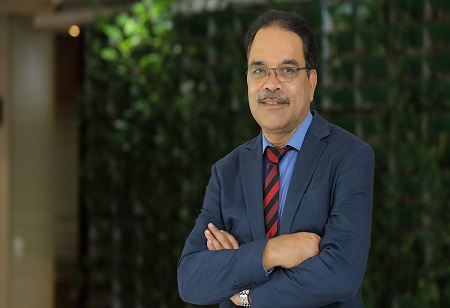
Infrastructure development plays a key role in fulfilling India’s dream to become a USD 5 trillion economy by 2025. The sector forms an integral part of the country's economic growth, with all the recent development of world-class facilities across the country in the areas of first and last-mile connectivity through roads, waterways, railways, airports, and ports, among others.
There has been significant momentum in the industry, and some of the recent government initiatives like “Smart City Mission”, and “PM Gati Shakti” have further boosted the sectoral sentiments. The government’s recent announcement of a USD 1.3 trillion national master plan in infrastructure, ‘PM Gati Shakti’, to reduce costs and boost the economy is a testament to the need for integral and effective reforms to build a stronger sector. On the other hand, with a program like Smart City Mission, the government aims to promote sustainable and 100 inclusive cities providing core infrastructure to offer a quality of life and a clean and sustainable environment to the citizens.
India has a coastal line that extends over 8000 km including parts of Maharashtra, Gujarat, Andhra Pradesh, Tamil Nadu, Kerala, and West Bengal. These cities are prone to corrosion, leading to frequent maintenance requirements. It adds to the loss of material and impacts productivity. Besides, deferred preventative or corrective corrosion maintenance often leads to accelerated degradation of steel and structures.
The smart city programs have proven to be a successful milestone for the sector which has witnessed enhanced connectivity. The market is driven by the rising demand for galvanized steel in industrial applications and an increase in demand for pre-engineered buildings.
We have witnessed corrosion as a global issue that wreaks havoc on infrastructure, and transportation systems thus impacting the overall economy. Maintenance repairs create additional problems and disrupt daily activities for weeks and sometimes years – in the end. Corrosion degrades the steel substrate. The rust or iron oxide removes material from the piece of iron, jeopardizing its long-term usage. Hot dip galvanizing is a proven solution that protects the product and extends its useful life by coating a thin layer of zinc onto the steel. The global galvanized steel market is poised to grow by 57.74 million tons during 2021-2025, progressing at a CAGR of about 3% during the forecast period as per the Global Galvanized Steel Market 2023-2027 report.
A long-term answer to this far-reaching problem is the use of zinc-protected steel during the structure’s initial construction stages, which is, Galvanizing. Earlier, corrosion and restoration of corrosion damages were a huge concern given the high costs, wastage of natural resources, and many other indirect costs. Thus, the specification of galvanization was introduced and evolved as a new emerging market. Galvanization which was once considered only as a means of corrosion protection is now specified for an array of reasons such as longevity, sustainability, lower initial costs, availability, durability, and even aesthetics.
Galvanizing is a proven and extremely effective way to protect both construction steel and reinforcing bars from corrosion as it provides both barrier and galvanic protection to the steel substrate. It also increases the chloride threshold of the reinforcing bar Steel structures with zinc coating are environment friendly, has the lowest life-cycle cost, and possess properties that can significantly enhance the life of any structure with minimum maintenance. When a building or any structure reaches the end of its life, its zinc-containing alloy products can be fully recycled, and in some cases directly re-used to extend their functional service e.g., lighting, hardware, etc. This allows them to be used again and again, in many cases for the same application.
Although India has become the world’s second-largest crude steel producer, it still lags behind major developed economies in the uptake of galvanized steel. India’s per capita demand for zinc-coated steel is 7 kilograms which are far behind the world average of 22 kilograms. If we compare this data with leading global markets, India stands on the far side in its efforts to reduce corrosion and ensure sustainable development. With India being a price-sensitive market, the need to reiterate the relevance of Indian Coating Standards becomes even more important. Lack of this awareness leads to manufacturers and retailers taking undue advantage by offering cheap sub-standard coated, rebars and painted roofing sheets.
In order to increase domestic steel production, the Government has come out with National Steel Policy 2017, to facilitate faster growth and development of the steel industry in the country. And in turn, to increase longevity and durability, the usage of galvanized steel will be a key enabler in India’s economic success. It becomes imperative to integrate its usage across sectors which will not only help us to build a stronger economy but also be important in India’s transition to a modern, sustainable superpower.
We use cookies to ensure you get the best experience on our website. Read more...